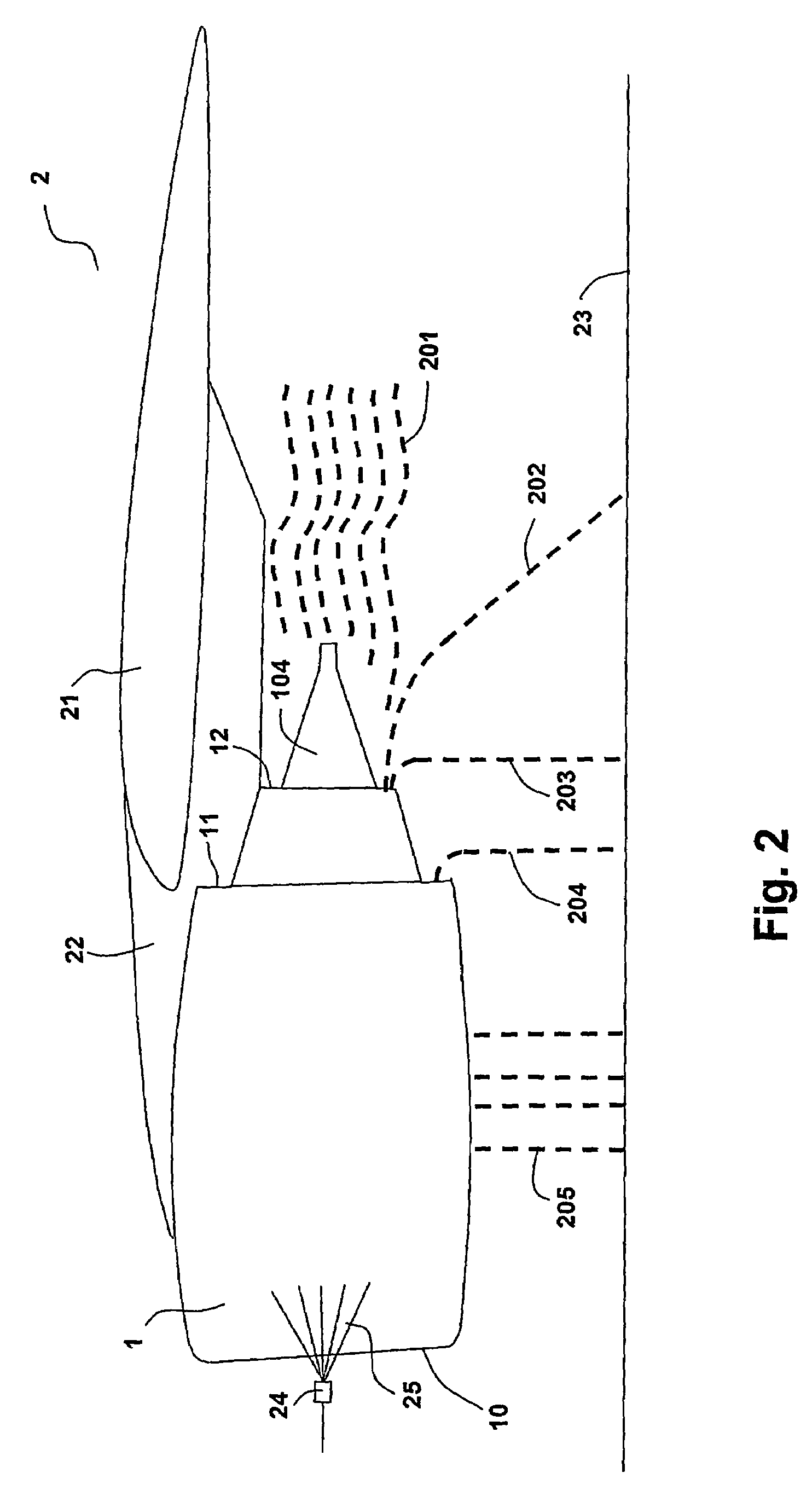System and devices for collecting and treating waste water from engine washing
a jet engine and waste water technology, applied in the direction of machines/engines, separation with moving sorbents, construction, etc., can solve the problems of reducing engine performance, changing the aerodynamic properties of the engine, and consuming large quantities of air, so as to achieve simple process, enhance wash results, and limit success
- Summary
- Abstract
- Description
- Claims
- Application Information
AI Technical Summary
Benefits of technology
Problems solved by technology
Method used
Image
Examples
Embodiment Construction
[0034]Further scope of applicability of the present invention will become apparent from the detailed description given hereinafter. However, it should be understood that the detailed description and specific examples, while indicating preferred embodiments of the invention, are given by way of illustration only, since various changes and modifications within the spirit and scope of the invention will become apparent to those skilled in the art from this detailed description.
[0035]The invention can be practised on several engine types such as turboshaft, turboprop, turbojet and mixed / un-mixed multi shaft turbo fan engines. The invention can be practised on under-wing mounted engines as well as tail mounted engines as further shown in FIG. 6 and FIG. 7.
[0036]FIG. 1 shows a cross section of an un-mixed turbofan engine. This engine is of a common type found on e.g. large aircraft in passenger service. Engine 1 comprises of a fan section 102 and a core engine section 103. Air flows are i...
PUM
| Property | Measurement | Unit |
|---|---|---|
| size | aaaaa | aaaaa |
| size | aaaaa | aaaaa |
| volume | aaaaa | aaaaa |
Abstract
Description
Claims
Application Information
 Login to View More
Login to View More - R&D
- Intellectual Property
- Life Sciences
- Materials
- Tech Scout
- Unparalleled Data Quality
- Higher Quality Content
- 60% Fewer Hallucinations
Browse by: Latest US Patents, China's latest patents, Technical Efficacy Thesaurus, Application Domain, Technology Topic, Popular Technical Reports.
© 2025 PatSnap. All rights reserved.Legal|Privacy policy|Modern Slavery Act Transparency Statement|Sitemap|About US| Contact US: help@patsnap.com



